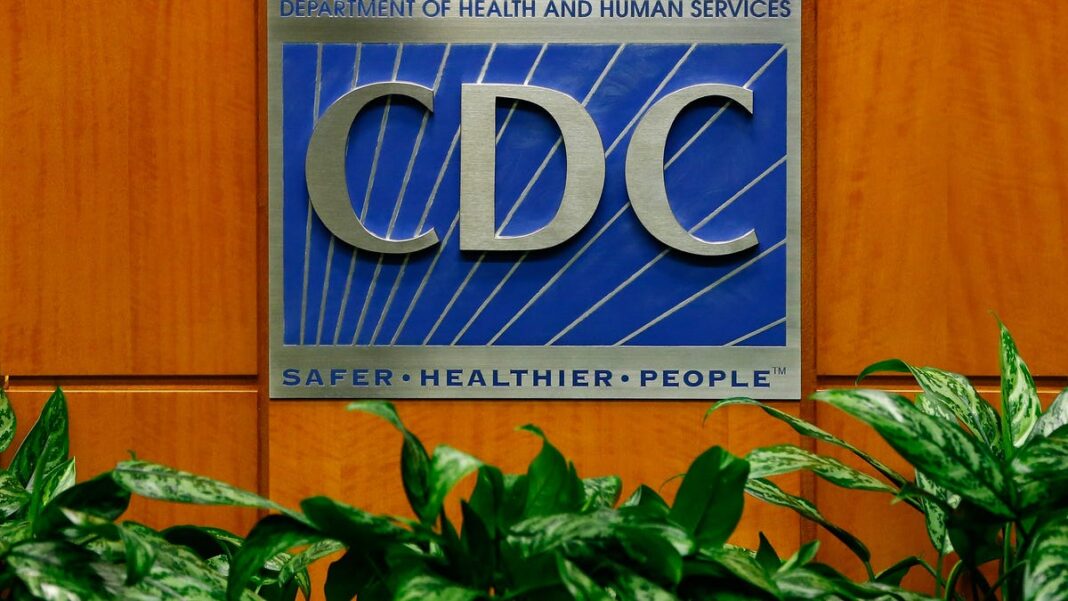CDC to Initiate Screening for Marburg Virus Among Travelers from Rwanda at 3 Airports in the US
“Currently, the risk of MVD in the United States is low; however, clinicians should be aware of the potential for imported cases,” the CDC stated.
The Centers for Disease Control and Prevention (CDC) has issued a Level 3 travel advisory for Rwanda following an outbreak of the Marburg virus.
Marburg virus disease (MVD) is a severe and often lethal illness characterized by viral hemorrhagic fever, as explained by the World Health Organization.
This virus was first identified in 1967 during concurrent outbreaks in Marburg and Frankfurt, Germany, alongside Belgrade, Serbia.
According to the U.S. Department of Health and Human Services, cases have been reported in seven districts of Rwanda as of September 27.
“The United States is implementing a collaborative response in partnership with the government of Rwanda, the World Health Organization, Africa CDC, and other global partners to address the MVD outbreak,” the agency noted.
To help travelers stay informed about potential health risks, the CDC posts Travel Health Notices on its website. These are classified from Level 1 to Level 4, indicating the safety status of different countries.
CDC to Screen Travelers: “Potential for Imported Cases”
Rwanda is currently classified as a Level 3 area, meaning travelers should “reconsider nonessential travel.” The notice indicates that the outbreak may pose risks to travelers due to limited preventative measures.
“While the current risk of MVD in the United States is low, healthcare providers should remain vigilant for possible imported cases,” the CDC has communicated.
The CDC announced that starting the week of October 14, public health entry screening will be conducted for travelers arriving in the U.S. who have been in Rwanda within the last 21 days.
“The Biden-Harris Administration revealed plans to initiate public health checks at three U.S. airports for passengers coming from Rwanda to mitigate the risk of introducing Marburg virus disease into the country,” said Rosa Norman, a CDC spokesperson, in a statement to YSL News.
“Travelers who visited Rwanda in the past 21 days will be rerouted to Chicago (ORD), New York (JFK), and Washington, D.C. (IAD) for public health screening upon arrival,” Norman added.
This screening is aimed at minimizing the potential spread of the virus within the United States, according to the CDC.
“At present, Rwanda is facing an outbreak of Marburg, which is a rare and severe viral hemorrhagic fever similar to Ebola,” Norman noted.
Here’s what you should know about the Marburg virus.
How Many Cases of Marburg Virus Have Been Reported in Rwanda?
The latest update from the Rwandan Ministry of Health on October 7 indicates there are 56 confirmed cases of the Marburg virus, with 12 reported fatalities thus far.
Is There a Vaccine for the Marburg Virus?
Currently, no approved vaccines or treatments exist for the Marburg virus, as stated by the Center for Infectious Disease Research and Policy.
The Administration for Strategic Preparedness and Response has allocated approximately $365 million toward developing a vaccine and antibody treatment for the Marburg virus.
The agency informed YSL News that vaccination and treatment efforts have commenced in Rwanda. This clinical trial has received approval from Rwandan Regulatory and Ethics Authorities.
How Lethal is the Marburg Virus?
The World Health Organization reports an average fatality rate of around 50%. Depending on the virus strain and public health responses, the death rate can vary between 25% and 90%.
What are the Symptoms of the Marburg Virus?
The CDC indicates that Marburg virus symptoms can resemble those of other tropical diseases, making diagnosis difficult.
Initial symptoms of the virus include:
- Fever
- Chills
- Headache
- Muscle aches
- Rash with both flat and raised bumps, often on the torso
- Chest pain
- Sore throat
- Nausea, vomiting, and diarrhea
More severe symptoms of the Marburg virus may include:
- Liver failure
- Delirium
- Shock
- Bleeding
- Multi-organ dysfunction
How Can You Prevent the Marburg Virus?
The CDC suggests preventing the Marburg virus by avoiding:
- Contact with the blood and bodily fluids of infected individuals
- Contact with the semen of a person who has recovered
- Until the test indicates that the virus is no longer detectable
- Potentially contaminated items that may have come into contact with an infected person’s bodily fluids
- Exposure to Egyptian Rousette bats and non-human primates in regions where Marburg virus is prevalent

